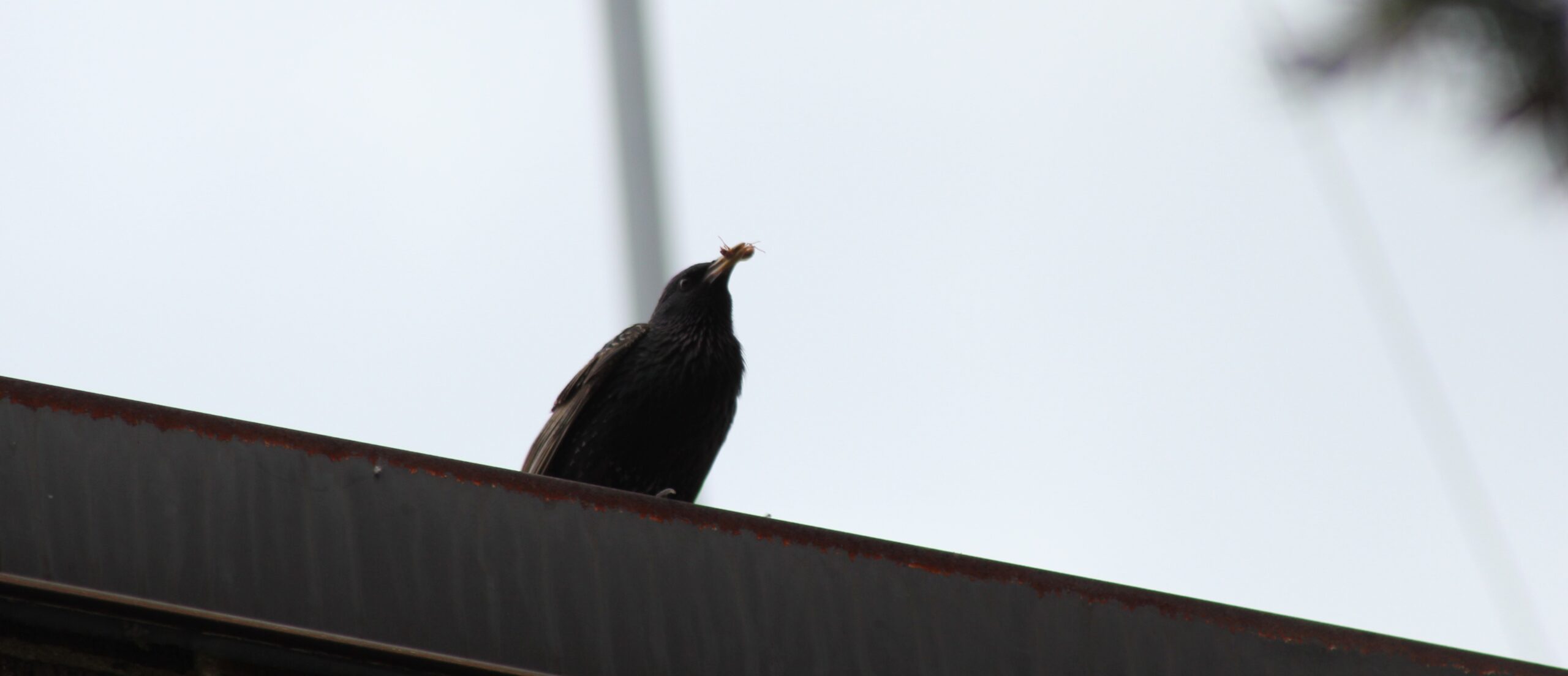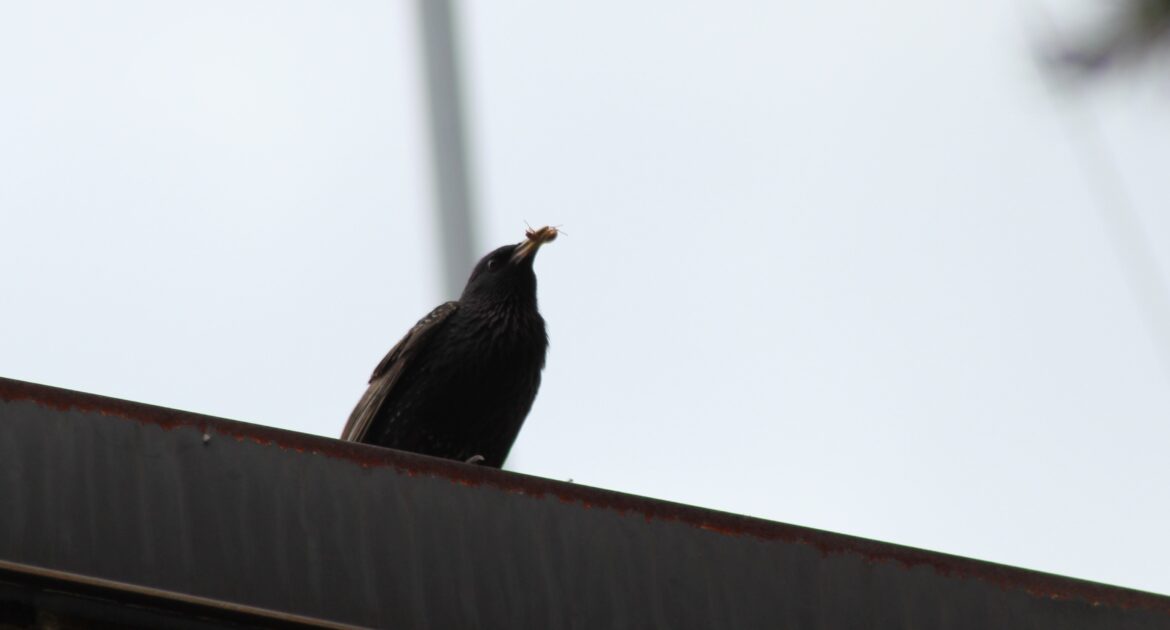Maintaining a vibrant, healthy lawn takes consistent care, but birds can quickly undo your efforts. These seemingly harmless creatures can cause devastating bird lawn damage by digging up grass, feeding on seeds, and leaving droppings that harm grass health. Over time, this can result in patchy, uneven, and unhealthy-looking outdoor spaces.
To prevent birds on lawn areas and minimize damage, it’s essential to use bird control strategies that work. Addressing these problems early preserves your lawn’s health and avoids expensive repairs. Here in Toronto, Skedaddle Humane Wildlife Control provides humane solutions to tackle these issues with expertise and care.
Below, we’ll examine how birds interact with your lawn and provide straightforward strategies to protect it from harm.
How Birds Can Damage Your Lawn
Birds, in search of food or nesting spots, can create several problems for lawns and yards. Though their actions might seem minor initially, they can lead to significant issues if ignored. Below are some of the most common ways birds negatively impact lawns.
Digging and Pecking
Birds are known to dig or peck at lawns when searching for insects, such as grubs or worms, that live under the surface of the grass. While this is a natural behaviour, it often leads to visible damage. Patches of grass are loosened or pulled away, exposing the bare soil beneath.
This exposed soil is highly susceptible to erosion and poor drainage. Water can pool in these areas, encouraging weed growth and further degrading the lawn’s appearance. Without intervention, birds can cause widespread damage, requiring extra time and effort to fix.
If you notice birds frequently pecking at your lawn, it could also be a sign of a wildlife infestation beneath the surface. Addressing this sooner rather than later can prevent further damage.
Droppings That Harm Grass Health
Bird droppings may seem like a minor inconvenience, but they pose a large threat to lawn health. These droppings are acidic and can scorch grass, leaving unsightly yellow or brown patches.
When droppings accumulate in large quantities, especially if flocks gather in a single area, they create long-term damage. These patches often fail to recover, leaving the lawn uneven and unattractive. Additionally, droppings can carry bacteria or pathogens, which may make outdoor spaces unsafe for children or pets.
Attacking Seeds and Displacing Sod
Lawns that are newly seeded or recently sodded are especially vulnerable to bird damage. Birds tend to eat grass seed directly off the surface, prolonging the germination process and leaving the area patchy.
Similarly, when feeding under sodded lawns, certain birds lift sections of sod, exposing the roots to air and light, which can kill the grass. Once sod is displaced, it’s often difficult to restore and may require replacement. Protecting these vulnerable areas is essential during lawn establishment.
Disturbing Mulch and Landscaping
Mulched areas around the yard can also fall victim to bird activity. These animals often scatter mulch while looking for food, creating messes around your lawn and pathways. A disturbed landscape not only affects your yard’s appearance but can also expose sensitive plants to wildlife or extreme temperatures.
Contributing to Larger Wildlife Problems
Unmanaged bird activity can inadvertently attract even more wildlife to your yard. For instance, droppings, leftover food, or exposed bare soil may invite mice, insects, and other animals. This creates a chain reaction where a problem eventually escalates into a larger wildlife control issue.
The Importance of Prevention
Bird lawn damage often starts as small, barely noticeable issues, like a few pecks in the grass or a couple of yellow spots where droppings landed. It’s easy to overlook these things, thinking they’ll heal on their own. However, these minor problems can quickly grow into larger concerns. Birds have consistent habits, returning to the same spots to feed, peck, or rest, and this repetitive behaviour increases the level of damage to your yard over time.
If these early signs go unaddressed, your lawn may develop widespread bare patches, discoloured areas, and drainage issues. For example, grass pulled up by birds exposes the soil, which can then erode during rain or lead to pooling water. This not only impacts the lawn’s appearance but also weakens its foundation, making it harder for new grass to grow back. Over time, the costs to reverse this damage can skyrocket, especially when replanting, pest control, or landscaping redesign is required.
Proactive prevention is the most reliable way to avoid reaching this costly and time-consuming stage. By addressing activity at its earliest signs and implementing strategies to keep them away, you can avoid significant harm. Prevention also saves you the stress of needing repeated fixes or ongoing battles to maintain a healthy lawn.
Simple actions, like securing seeds, managing wildlife, and using deterrents, ensure your yard remains intact, vibrant, and easier to care for. By staying ahead of the problem, you’ll protect your time, money, and effort, all while enjoying a beautiful outdoor space free from unnecessary hassles.
Bird Control Strategies That Work
Preventing birds from causing damage to your lawn doesn’t have to be complicated. Thoughtful planning and humane methods can make your outdoor space less appealing to birds while still protecting its beauty. Here are some effective ways to keep these animals at bay and maintain a healthy lawn.
Maintaining a Healthy Lawn
Focusing on your lawn’s overall health is one of the simplest ways to discourage birds. These animals are often attracted to unhealthy lawns, where the soil is exposed or wildlife are abundant. A well-kept lawn gives birds fewer reasons to linger.
Keeping your grass thick and healthy makes it more difficult for birds to dig through the surface. Aerating your lawn helps strengthen roots, while fertilizer ensures lush growth that resists damage.
Birds are drawn to lawns that harbour insects like grubs. Using non-toxic and environmentally friendly wildlife control solutions can clear these infestations, reducing the birds’ food supply and their interest in your lawn.
Protecting Vulnerable Areas
Newly planted or repaired lawns are especially at risk. Freshly seeded grass and newly laid sod need some extra care to prevent bird interference.
- Cover Grass Seed with Mesh: Use lightweight netting or fabric to cover seeded areas. This prevents birds from eating the seed while still allowing sunlight, air, and water to reach the soil.
- Ensure Sod is Secure: If you’ve installed new sod, ensure it’s placed tightly without gaps and water it consistently to promote deep rooting. Fast-rooted grass is less likely to be pulled up by birds.
Reduce Attractants
Creating an environment that doesn’t appeal to birds can significantly reduce activity. Small adjustments to your yard can encourage birds to move on to other areas.
- Eliminate Water Sources: Birds are attracted to standing water, such as small puddles or birdbaths. Fix drainage issues and remove water where possible to make your yard less welcoming.
- Use Visual Deterrents: Items like reflective tape, shiny objects, or wind-activated decorations can startle birds and keep them away from sensitive areas. These are humane, easy to use, and work well near problem spots.
- Relocate Birds’ Food Sources: Avoid placing bird feeders near your lawn, as spilled seeds can attract more birds to the grass. Instead, position feeders in other parts of your yard, well away from vulnerable areas.
Rely on Humane Deterrents
When bird activity becomes problematic, humane deterrents are key. Consider natural, non-invasive options that help protect your lawn without harming the birds. Products like noise-making devices, shrubs, or mock predator fixtures can work well when used correctly.
By using these humane and practical approaches, you’ll keep your lawn safe from damage while ensuring a bird-friendly and respectful outdoor space.
Keep Your Yard Clean
Birds are more likely to settle in messy or cluttered areas where food or shelter is readily available. Keeping your yard well-maintained reduces these opportunities.
- Clean Up Droppings Promptly: Droppings can not only damage grass but also encourage other birds to return. Regularly removing droppings helps deter them from frequent visits.
- Remove Debris or Leftover Food: After outdoor events or mealtime on a patio, clean up crumbs, discarded food, and spills to reduce the likelihood of birds foraging nearby.
Expert Help Protects Your Lawn
Bird-related issues aren’t always simple to manage, especially if they’ve been ongoing for a while. Over time, even small amounts of bird lawn damage can alter the overall health and appearance of your yard. Taking action quickly helps protect your lawn’s health and reduces the effort required to reverse the damage.
If you’re struggling with persistent bird issues or need reliable, humane support, Skedaddle Humane Wildlife Control in Toronto offers tailored solutions designed to protect your outdoor spaces. Combining prevention tactics with proven methods such as one-way doors helps ensure your lawn stays bird-free without harm to the animals.
Request an estimate today to see how Skedaddle can assist with your bird control needs, keeping your lawn green and thriving for years to come.




